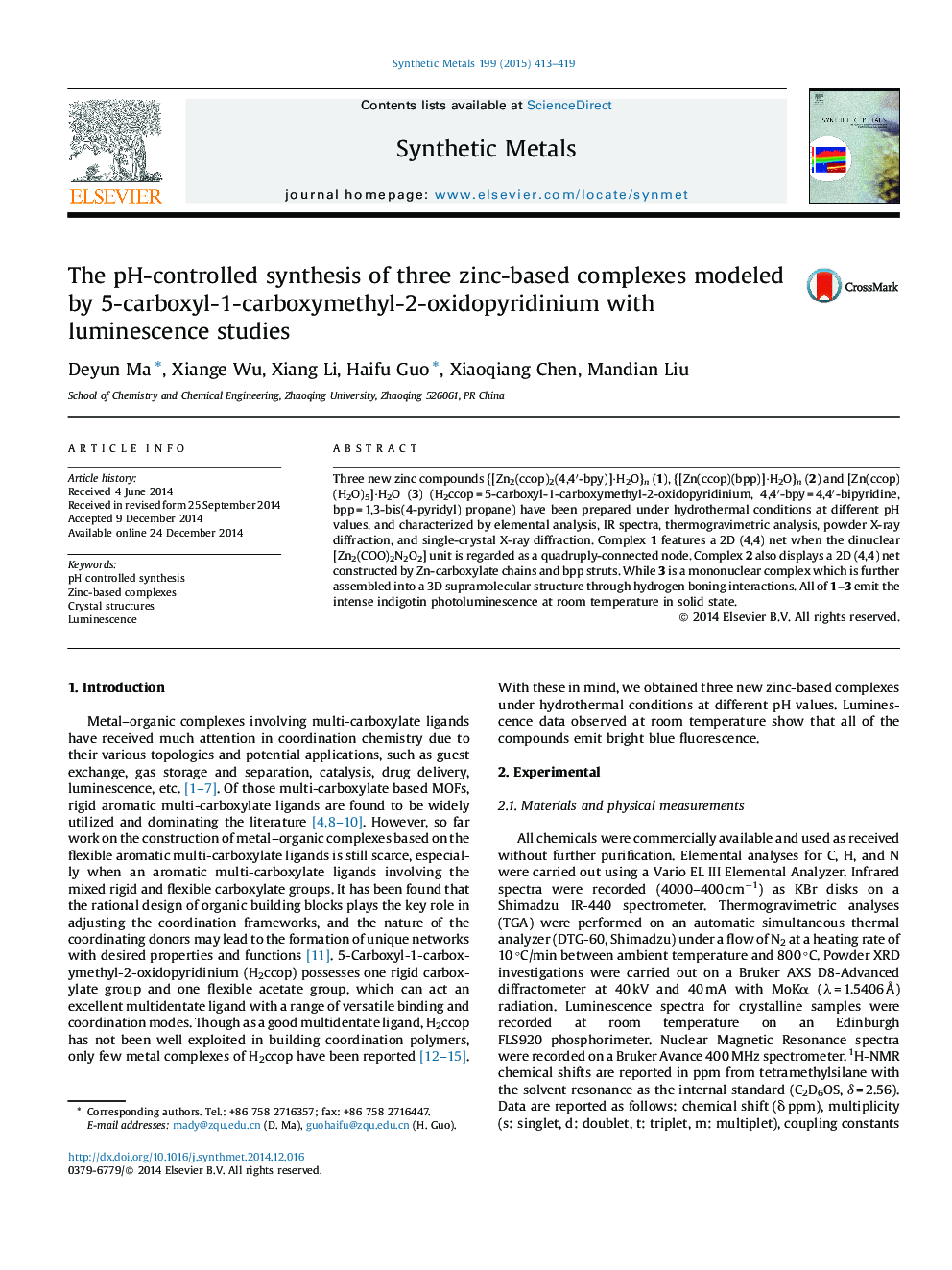| Article ID | Journal | Published Year | Pages | File Type |
|---|---|---|---|---|
| 1440822 | Synthetic Metals | 2015 | 7 Pages |
•The pH-controlled synthesis of three zinc-based complexes.•Three kinds of coordination modes of ccop ligands are observed in title compounds.•Complexes 1–3 emit the intense indigotin photoluminescence at room temperature.
Three new zinc compounds {[Zn2(ccop)2(4,4′-bpy)]·H2O}n (1), {[Zn(ccop)(bpp)]·H2O}n (2) and [Zn(ccop)(H2O)5]·H2O (3) (H2ccop = 5-carboxyl-1-carboxymethyl-2-oxidopyridinium, 4,4′-bpy = 4,4′-bipyridine, bpp = 1,3-bis(4-pyridyl) propane) have been prepared under hydrothermal conditions at different pH values, and characterized by elemental analysis, IR spectra, thermogravimetric analysis, powder X-ray diffraction, and single-crystal X-ray diffraction. Complex 1 features a 2D (4,4) net when the dinuclear [Zn2(COO)2N2O2] unit is regarded as a quadruply-connected node. Complex 2 also displays a 2D (4,4) net constructed by Zn-carboxylate chains and bpp struts. While 3 is a mononuclear complex which is further assembled into a 3D supramolecular structure through hydrogen boning interactions. All of 1–3 emit the intense indigotin photoluminescence at room temperature in solid state.
Graphical abstractThree new Zn-based complexes have been hydrothermally synthesized under different reaction pH values. All of the three compounds emit the intense blue characteristic luminescence at room temperature.Figure optionsDownload full-size imageDownload as PowerPoint slide
